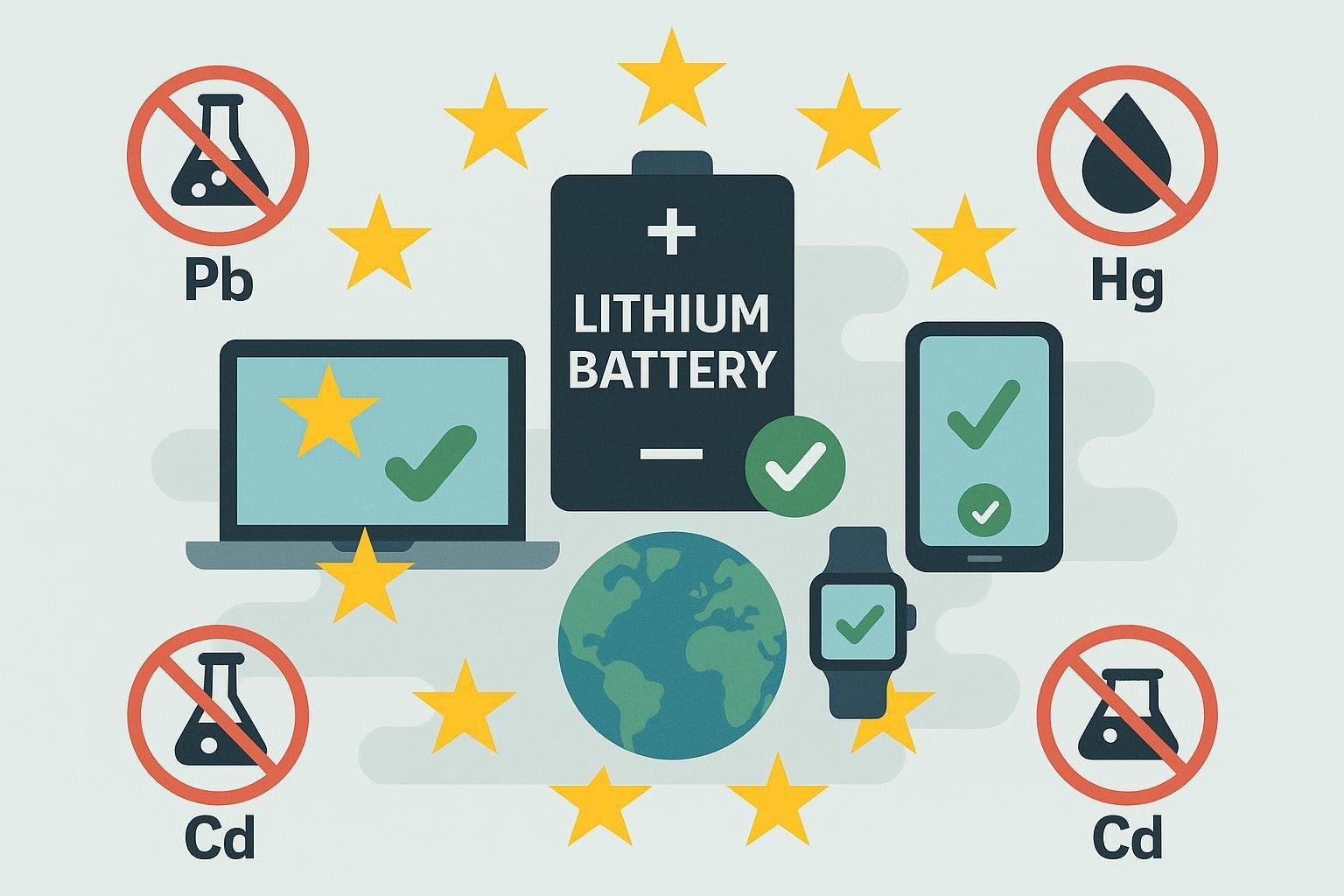
一句话定义
RoHS (Restriction of Hazardous Substances Directive) is a European Union (EU) law restricting the use of specific hazardous substances in electrical and electronic equipment to protect human health and the environment.[^1]
详细说明
First introduced as 2002/95/EC and recast as 2011/65/EU (commonly called RoHS 2), RoHS mandates that manufacturers, importers, and distributors do not use certain toxic materials above specified thresholds in products sold within the European Economic Area. The directive covers a wide range of electrical and electronic equipment (EEE), including consumer electronics, industrial controls, and battery-powered devices.
RoHS helps to ensure that hazardous materials—especially those that can leach into the environment or pose risks during recycling—are strictly limited in finished products and their components. It sets maximum concentration values (typically 0.1% by weight per homogeneous material; 0.01% for cadmium), and compliance is typically verified before CE marking and product placement on the EU market.
Key Restricted Substances (2024 – 2025)
| Substance | Limit |
|---|---|
| Lead (Pb) | 0.1% |
| Mercury (Hg) | 0.1% |
| Cadmium (Cd) | 0.01% |
| Hexavalent Chromium (Cr VI) | 0.1% |
| Polybrominated Biphenyls (PBB) | 0.1% |
| Polybrominated Diphenyl Ethers (PBDE) | 0.1% |
| Bis(2-ethylhexyl) phthalate (DEHP) | 0.1% |
| Butyl benzyl phthalate (BBP) | 0.1% |
| Dibutyl phthalate (DBP) | 0.1% |
| Diisobutyl phthalate (DIBP) | 0.1% |
These limits are per homogeneous material. Source: Nemko RoHS Guide
RoHS and Batteries: Specific Issues & Exemptions
RoHS covers most electrical and electronic devices, but battery regulation in the EU is now also governed by the Battery Regulation (EU) 2023/1542. While standard RoHS applies to lithium batteries and battery-powered products, some categories and chemistries have exemptions or are regulated by overlapping laws. Key points:
- Lithium and rechargeable batteries: Usually subject to RoHS, but some industrial/medical types may have temporary or special exemptions.
- New Battery Regulation (2023/1542): Introduces additional requirements (e.g., removability, due diligence, extended producer responsibility) beyond RoHS.
- Compliance overlap: RoHS and the Battery Regulation are both critical for manufacturers; meeting RoHS is not enough for full EU legal compliance in batteries.[^2]
Practical RoHS Compliance Workflow for Manufacturers
- Supplier Declarations: Collect and verify hazardous substance declarations from all suppliers.
- Material Testing: Conduct laboratory analyses (e.g., X-ray fluorescent spectroscopy) on high-risk parts.
- Technical Documentation: Prepare and update a Technical File detailing conformity (required for CE marking).
- Declaration of Conformity (DoC): Issue a formal DoC, referencing RoHS and related directives.
- Labelling: Ensure RoHS (and, where necessary, CE mark) is visible on compliant products.
- Ongoing Surveillance: Regularly audit new components and regulatory changes.[^3]
Real-World Example
A small lithium polymer battery (e.g., LP322424 200mAh LiPo) successfully demonstrated RoHS compliance via independent lab testing and technical documentation, enabling widespread export to the EU market.
Related Regulations and Concepts
- Battery Regulation (EU 2023/1542): Governs lifecycle management of batteries, including substance restrictions, removability, and labeling.
- WEEE Directive: Focuses on e-waste disposal and collection obligations. More on WEEE
- REACH Regulation: Manages broader chemical safety in the EU, covering all chemical imports and uses.
- CE Marking: Affixed to products confirming EU regulatory compliance, of which RoHS is a part.
For in-depth legal reference, see: EU official RoHS page | LeadR RoHS Certification Guide
参考资料
[^1]: LeadR RoHS Certification Guide [^2]: li-polymer-battery.com on RoHS for LiPo Batteries [^3]: Nemko RoHS Compliance Guide

